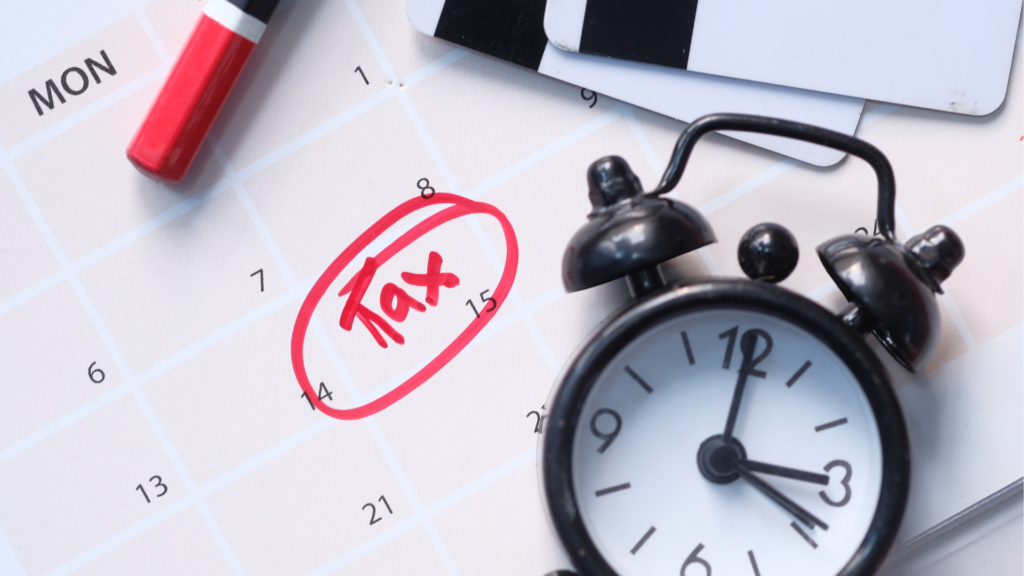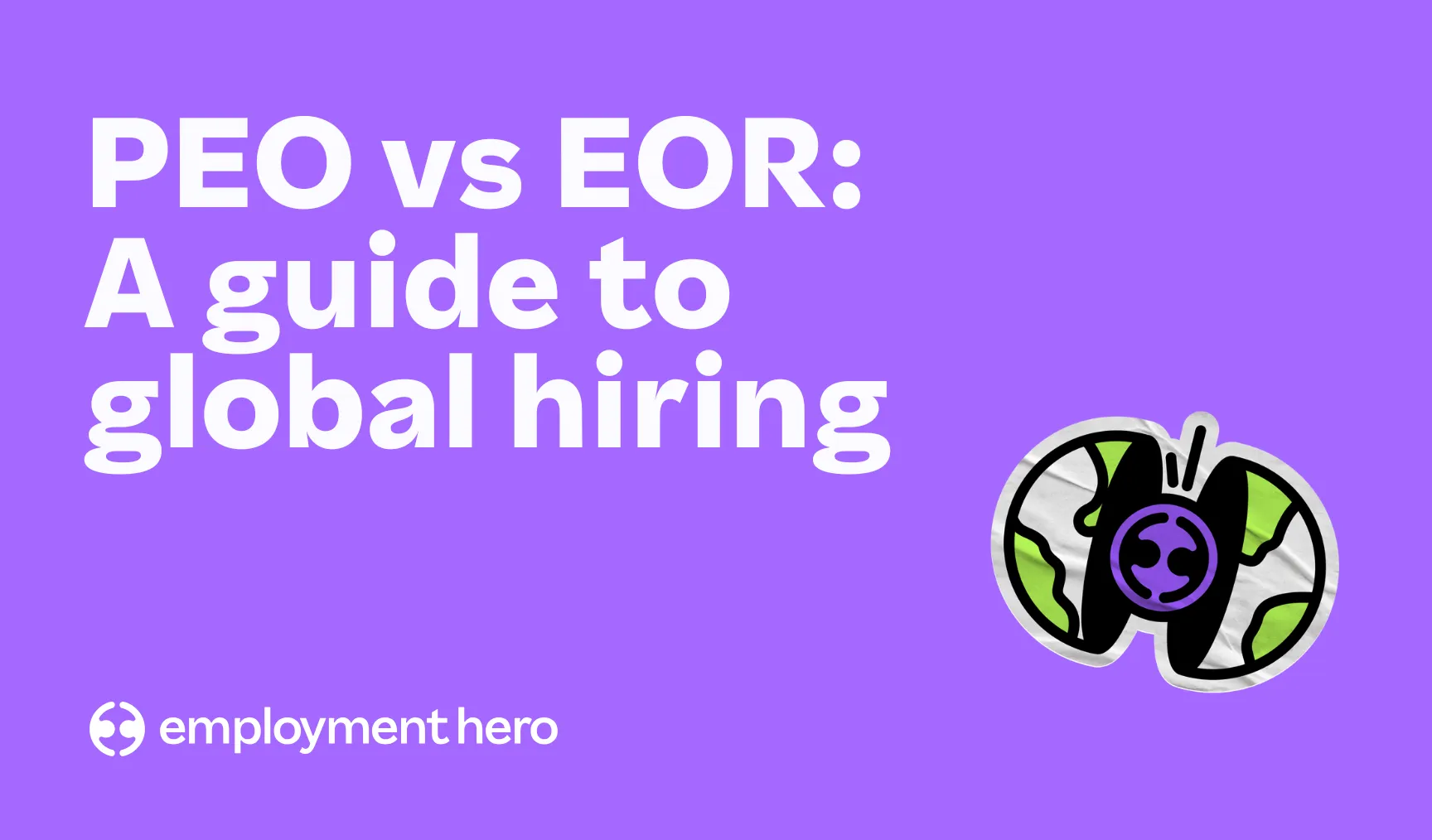How do you fill in a self assessment tax return?
We’re already approaching the end of the financial year and the dreaded (albeit necessary) tax return season. So how do you fill in a self assessment tax return? Read on for our top tips.

How do you fill in a self assessment tax return? Have no fear – before you start breaking into a cold sweat, we’re here to make the process of filing your self-assessment tax return much less intimidating and more understandable. Whether you’re a lone wolf or running a small business, we’ll break down the jargon, demystify the forms, and share the ultimate strategies to help you keep more of your hard-earned cash.
Tax returns are the Government’s way of ensuring that everyone pays enough tax. If you’re self-employed, a freelancer, a business owner, or other income that isn’t deducted automatically, you’ll likely need to fill out one of these bad boys. Think of your self-assessment tax return as a financial report card that you hand into HMRC each year, detailing your earnings and expenses.
Don’t worry, it might sound super complicated, but with a bit of patience and some online tools, you can prepare for the end of the financial year and avoid any tax-related surprises down the road.
So, take a seat, settle in and let’s break down the basics of self-assessment tax returns.

Why should you file your self-assessment tax return online?
When an employee asks how do you fill in a self assessment tax return, we always advise them to do it online. Filing your self-assessment tax return online is like choosing the easier and more efficient path to tax nirvana.
It’s the 21st-century solution to an old-school chore. Not only does it save you from the hassle of paper tax returns via snail mail, but filling your return online also offers some great advantages like extended deadlines, faster processing and automatic calculations. Not to mention zero manual paperwork and less human error.
So, why bother with queues and paperwork when you can embrace the ‘making tax digital’ revolution with just a few clicks?
What are the income tax brackets in the UK this year?
Income tax brackets aren’t one-size-fits-all – think of them more like a sliding scale of taxation. How much you’ll pay for your self-assessment tax bill will depend on how much you earn.
Whether you’re a high-roller, a mid-level earner, or just earning some extra income, knowing these tax brackets is your ticket to understanding what’s left in your bank account after the taxman comes knocking.
Understand what you’ll pay for your self-assessment bill at a glance.
- Personal allowance: The tax-free income threshold is £12,570. This means you can earn up to this amount without paying income tax.
- Basic rate: Income over the personal allowance up to £50,270 is taxed at the basic rate of 20%.
- Higher rate: Income over £50,270 up to £150,000 is taxed at the higher rate of 40% and anything over £150,000 is taxed at 45%.
These tax rates and thresholds can vary from the previous tax year due to government decisions and economic factors, so it’s important to keep informed of any changes via the HMRC.
When is the final deadline for self-assessment tax returns?
Self-assessment, tax and class 4 national insurance contributions are due every year on 31 January, so now is the time to get prepared for the end of the tax year.
Mark it on your calendar, set a reminder on your phone, and make sure you’ve got your financial ducks in a row by then because missing that deadline can lead to some nasty fines and penalties.
We’re talking late filing fees, interest on unpaid tax, payment on account and legal action. It’s therefore essential to file your tax return on time to avoid any penalties.
If you’re unable to meet the deadline, contact HMRC as soon as possible to discuss your situation and they can help you to explore possible solutions.
10 tips to keep in mind for this year’s tax return
Now that we’ve covered the who, what, where, when and why of the tax return, let’s take a look at the ultimate tips on how-to.
1. Self-assessment deadlines
There are a couple of key dates and deadlines that you should be adding to your calendar to ensure you are on top of your taxable income. Pin it, circle it, sticky note it.
- 5 April: This is the end of the UK tax year, and time to gather all your financial information for the year.
- 5 October: If you’re new to self-assessment or need to register for self-assessment tax, this is the deadline for notifying HMRC.
- 31 October: If you want HMRC to calculate your tax bill and send it to you, you can file a paper tax return by this date.
The following tax year:
- 31 January (financial year end): This is the big one! It’s the deadline for filing your return and for paying any tax you owe. It’s also the deadline for the first payment on account for the next tax year.
- 5 April: This is the start of the new tax year, and it’s the date by which you should make the second payment on account for the next tax year.
- 31 July: If you still owe tax after the two payments on account, this is the deadline for making a balancing payment.
- 5 October: If you missed the previous July deadline and didn’t complete your previous year’s tax bill, you’ll need to pay interest on the outstanding balance.
So, mark these dates in your calendar and stay organised throughout the year to make meeting your self-assessment tax obligations a whole lot smoother.

2. Gathering necessary documentation
One of the most daunting elements of completing a self-assessment tax return can be understanding what documents, receipts, and records you need. Don’t worry, we’ve got you! Here’s a printable checklist that you can have to hand while getting organised.
3. Common mistakes to avoid
One of the classic blunders when it comes to filing tax returns is procrastination. We can all be guilty of this when it comes to admin, but leaving things to the last minute can lead to hasty errors or, worse, missing the tax payment deadline. Now that you’ve got all your documents together, it’s worth being aware of some of the other common errors:
- Inaccurate income reporting: Forgetting to declare income sources, such as extra self-employed income, or taxable benefits can result in underreporting your earnings.
- Math mistakes: Calculation errors when determining your tax liability, deductions, child benefits or credits can lead to overpaying or underpaying taxes.
- Forgetting deductions and allowances: Neglecting to claim all eligible deductions, tax allowances and income, such as earnings above the student loan repayment threshold, means you might pay more tax than necessary.
- Not informing HMRC of changes: Failing to update HMRC about changes in your personal or financial circumstances can result in incorrect tax calculations.
To avoid these common mistakes, it’s crucial to keep accurate records, file your return on time, double-check your calculations, and seek professional advice if needed.
4. Tax deductions and allowances
In the UK, there are various allowable expenses, tax deductions, allowances, and tax credits available to help individuals and businesses reduce their tax liability. It’s useful to have an overview of some key opportunities and tips on how to maximise your tax savings:
Personal allowance
For the 2024/25 tax year, the personal allowance is £12,570. This is the amount of income you can earn tax-free. Ensure that your income is structured efficiently so that it falls within this allowance.
Marriage allowance
If you are married or in a civil partnership and one partner earns less than the personal allowance, you can transfer a percentage of their unused allowance to the higher-earning partner, reducing their tax bill.
Savings allowance
Depending on your income, you may be eligible for a savings allowance that allows you to earn a certain amount of interest on your savings tax-free.
Dividend allowance
If you receive dividend income from investments, you have an annual dividend allowance before you start paying tax. This can be particularly useful for investors.
Self-employed expenses
If you’re self-employed, you can deduct legitimate business expenses from your income. Keeping thorough records and claiming all eligible expenses can significantly reduce your taxable income.
Capital allowances
Business owners can claim capital allowances on certain assets, such as equipment or machinery. This allows you to deduct the cost of these assets from your profits to lower your tax bill.
Working tax credit and child tax credit
These are designed to provide financial support for low-income individuals and families. Check if you qualify and apply to receive these credits.
Research and development tax credits
If you’re a business engaged in qualifying R&D activities, you may be eligible for R&D tax credits which can significantly reduce your corporation tax liability.
Enterprise Investment Scheme (EIS) and Seed Enterprise Investment Scheme (SEIS)
These schemes offer tax incentives to investors who support qualifying startups and small companies. Investors can claim income tax relief, and businesses can attract investment more easily.
Pension contributions
If you are part of a registered pension scheme your contributions can provide tax relief based on your income tax rate, and having automated pension contributions can allow you to keep tabs on annual allowances and report contributions accurately. Structuring your finances and investments efficiently can make a significant difference in reducing your tax burden.
5. Filling out the tax return form
Completing the self-assessment form can seem daunting, but with the following step-by-step approach, we promise that it’s a lot more manageable.
- Register for online self-assessment. If you’re not already registered, visit the HMRC website and register online to receive your Unique Taxpayer Reference (UTR) and activation code.
- Gather your financial records. Collect all relevant documents needed for accurate reporting (see our handy checklist above).
- Log in to the HMRC online service. Visit the government gateway account to log in to your self-assessment account using your UTR and activation code and select “Start your tax return.”
- Report your income. Follow the prompts to report your income from various sources. This may include employment income, self-employment income, rental income, interest, dividends, and any other sources of income.
- Deductions and allowances. Report eligible deductions and allowances, such as business expenses, gift aid donations, student loan repayments, personal allowances, and any tax reliefs you qualify for.
- Capital Gains Tax. If you’ve made profits from selling assets, report your capital gains. Remember to apply any exemptions or reliefs you may be eligible for.
- Check your tax calculation. The system will calculate your tax liability based on the information you’ve provided. Review the calculation for accuracy.
- Tax credits and other information. If you’re eligible for tax credits or a tax refund you can claim them here. Additionally, provide any other requested information.
- Submit your tax return. Review your completed tax return for any errors or omissions and make sure to keep a copy of the submission confirmation for your records.
- Payment. If you owe tax, ensure that you make any assessment payments by the deadline. You can do this online through the HMRC portal.
Tax regulations can change from year to year, so always consult the latest guidance and updates from HMRC. If you’re unsure about any part of your self-assessment, consider seeking advice from a tax professional or an accountant.

Time to sign on the dotted line. Photo by Green Chameleon on Unsplash
6. Self-employed and small business tips
Self-employed individuals and small business owners have specific tax considerations and responsibilities. Here’s some tailored advice to help navigate the tax landscape.
Record-keeping is key
Keep meticulous records of your income and expenses. Use accounting software or apps to streamline this process. Keeping an accurate audit trail makes it easier to complete your tax return and claim deductions.
Register for self-assessment
If you’re self-employed or a sole trader, you must register for self-assessment with HMRC. Don’t delay in getting this sorted.
Understand your deductions
Familiarise yourself with allowable business expenses and deductions. This can include office space, equipment, travel, and more. Claiming these deductions can significantly reduce your tax liability.
Payments on account
Be aware of payments on account, which are advance payments toward your next year’s tax bill. Ensure you budget for these to avoid financial surprises.
National insurance contributions (NICs)
Understand your NIC obligations, both Class 2 and Class 4 NICs. These are important for your state pension entitlement and other benefits.
Separate business and personal finances
Using a corporate credit card for business expenses makes it easier to distinguish between personal and business expenses, and is crucial for accurate reporting.
Tax planning
Consider tax-efficient business structures, like forming a limited company. Consult with an accountant to explore the best options for your business.
Seek professional advice
Consider hiring an accountant or tax advisor who specialises in self-employment and small business taxation. They can help you maximise your tax savings and ensure compliance.
Keep up with tax law changes
Stay informed about tax law changes that might affect your business. HMRC often updates tax rules, and knowing these changes can help you plan better.
VAT considerations
If your annual sales exceed the VAT threshold, you may need to register for VAT. Make sure you understand the implications and requirements.
Digital tax accounts
Be prepared for Making Tax Digital (MTD) if your turnover exceeds the VAT threshold. This means keeping digital records and using MTD-compatible software to file VAT returns. Self-employment and small business ownership bring unique challenges, but with careful financial management and planning, you can navigate the tax system successfully.
7. Record-keeping strategies:
Maintaining organised financial records throughout the year can make filing your tax return much smoother. Here are some best practices we recommend:
- Use accounting software: Streamline record-keeping by investing in accounting software to track income, expenses, and tax deductions.
- Categorise expenses: Use consistent categories for expenses. This helps you identify deductions more easily during tax season.
- Set savings aside: Create a dedicated savings account to set aside money to pay tax payments.
- Regularly reconcile: Reconcile your bank and credit card statements to catch discrepancies or missing transactions.
- Track mileage: If you use your vehicle for business and maintain a mileage log you will be able to claim tax relief.
By following these practices, you’ll save time and minimise the risk of errors when it’s time to complete your tax return.
8. Paying your tax
In the UK, there are several methods for paying taxes available to you:
- Online banking
- Direct debit
- Debit or credit card
- Bank transfer
- Cheque
If you prefer to pay more regularly throughout the year—such as weekly or monthly—you can use HMRC’s budget payment plan, but only if your previous payments are up to date and if you are paying in advance. Consequences of late or missed payments can include:
- Penalties: HMRC may impose penalties and interest for late payments.
- Debt collection: An unpaid tax bill can be collected through debt collection agencies or even legal action.
- Damage to credit rating: Persistent non-payment of your tax bill can negatively affect your credit score.
- Additional costs: Interest accumulates on unpaid taxes, making the debt grow over time.
- Loss of tax credits: Late payment can affect your eligibility for tax credits and benefits.
To avoid these consequences, it’s crucial to pay your taxes on time and, if needed, contact HMRC to discuss budget payment arrangements or seek professional advice.

9. Penalties and appeals:
Oops! You’ve made a late or incorrect submission, what’s next? Don’t panic! There are a number of steps you can take to appeal your submission.
- Understand the penalty notice
- Gather supporting evidence
- Contact HMRC
- Formal appeal
- Escalate if necessary
- Tax tribunal
Staying organised and keeping accurate records can help prevent penalties in the first place, but if you do find yourself facing one, don’t be afraid to stand up for your case and appeal it. HMRC understands that mistakes happen, and they are willing to listen if you can provide a reasonable explanation.
10. Don’t be afraid to ask for help
Feeling a little overwhelmed by it all? Below are some examples of instances when it’s a good idea to call for professional advice in the shape of a tax professional or accountant.
- Business ventures: If you’re starting or running a business, especially a limited company, the tax rules can get pretty tangled. A tax pro can help you navigate through deductions, payroll, and more.
- High earnings or investments: When your income is more than just a simple paycheck, like investment income, rental income, or multiple income sources, a tax expert can ensure you’re optimising your tax strategy.
- Complex deductions: If you have lots of deductions or expenses to claim, an accountant can help make sure you’re not missing out on any tax breaks.
- International taxation: If you’re dealing with foreign income or assets, tax laws can get extremely complex. A professional can help you navigate the intricacies.
- Tax disputes or audits: If you’re in a dispute with HMRC or facing an audit, a tax pro can provide expert guidance and representation.
Keep on top of changes in laws and regulations
To get the latest information on changes to UK tax laws or regulations we recommend visiting the official HMRC website or consulting with a tax professional. Tax laws and regulations can change frequently, and it’s essential to have the most up-to-date guidance for your tax situation.
How Employment Hero can help
So there you have it, if you came here asking the question ‘how do you fill in a self assessment tax return?’, our comprehensive guide can help you to get your tax affairs in order.
Whether you’re a seasoned business owner or a first-time filer, we hope these tips and insights have demystified the process and made it a little less intimidating.
Remember, filing your self-assessment return online offers convenience, speed, and added security and understanding the UK’s income tax brackets and the all-important deadline of 31 January is crucial.
Employment Hero is the world’s first employment OS that can be integrated with various accounting platforms. We’ve covered the essential steps, from gathering your financial documents to avoiding common errors and taking advantage of tax deductions and allowances.
When it comes to filing your self-assessment tax return, Employment Hero has your back by helping you stay compliant with the latest information on tax regulations.
If you find yourself in a tax-related pickle, from penalties to disputes, don’t hesitate to reach out to HMRC or a tax professional for guidance. They’re there to help you out of the jam. If you feel like you need a little extra digital support to streamline the way you manage payroll, claim expenses or keep track of all the tax details necessary, we can help.
So, take a breath, grab that cuppa and tackle your self-assessment tax return with confidence. We’re here to help you navigate the labyrinth and keep more of your money in your pocket.
Happy filing!

Visit the official HMRC www.gov.uk/hmrc under “Self Assessment” where you can find supplementary pages that contain user-friendly tools, guides, and resources to assist taxpayers in completing their tax returns.
Disclaimer: The information in this article is relevant as at 27 January 2025, and has been prepared by Employment Hero Pty Ltd ABN (11 160 047 709) (Employment Hero). The views expressed herein are general information only and are provided in good faith to assist employers and their employees. The Information is based on data supplied by third parties. While such data is believed to be accurate, it has not been independently verified and no warranties are given that it is complete, accurate, up-to-date or fit for the purpose for which it is required. Employment Hero does not accept responsibility for any inaccuracy in such data and is not liable for any loss or damages arising either directly or indirectly as a result of reliance on, use of or inability to use any information provided in this article.
Related Resources
-
 Read more: Setting employee expectations: Your guide to getting it right
Read more: Setting employee expectations: Your guide to getting it rightSetting employee expectations: Your guide to getting it right
Learn how to set clear employee expectations to boost productivity and engagement. Discover actionable tips and strategies for leadership success.
-
 Read more: PEO vs. EOR: A guide to global hiring
Read more: PEO vs. EOR: A guide to global hiringPEO vs. EOR: A guide to global hiring
Contents Expanding your business into new markets is a powerful growth strategy. But hiring talent globally introduces a maze of…
-
 Read more: How to build a global team without a local entity
Read more: How to build a global team without a local entityHow to build a global team without a local entity
Learn how to streamline your hiring and expand your UK business globally with an Employer of Record (EOR) without the…





















